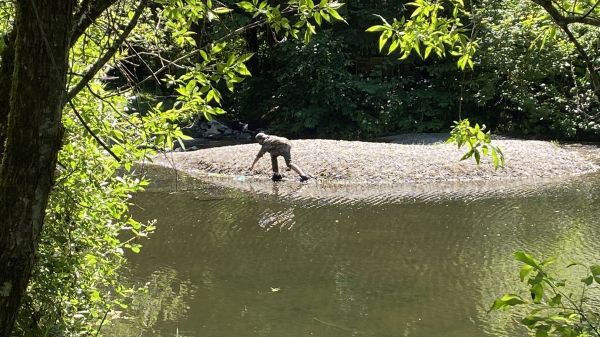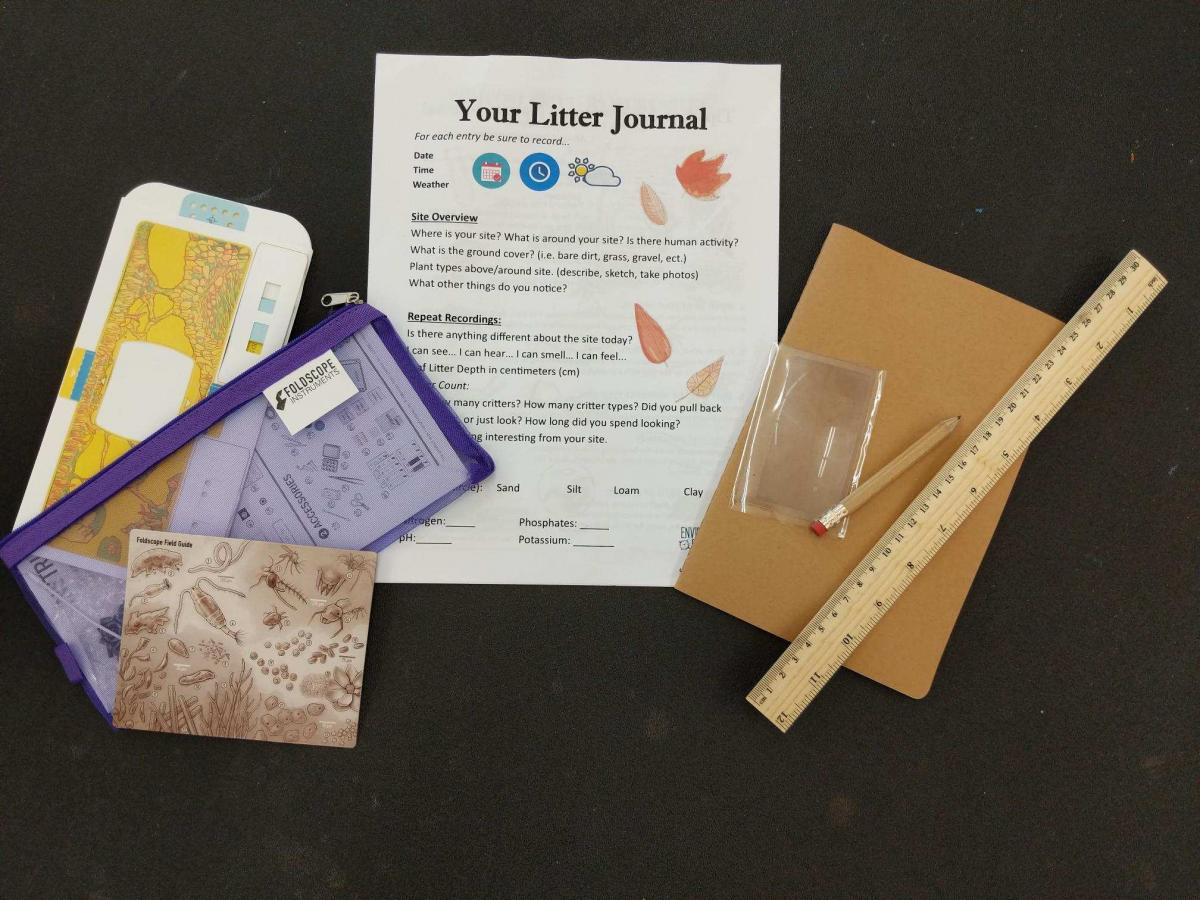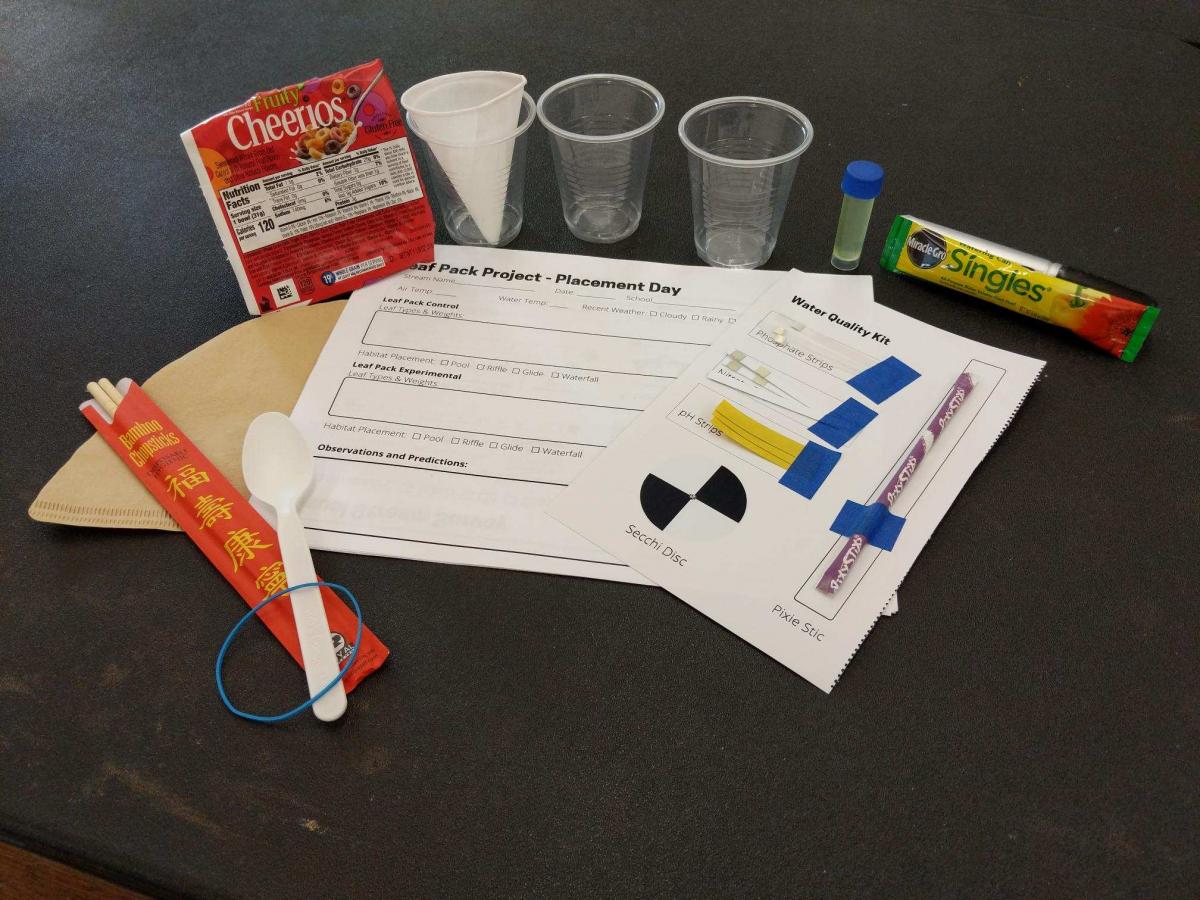Urban Watersheds: Adjusting Instruction During COVID-19

The NOAA Office of Education and NAAEE partnered to increase environmental and science literacy among NOAA’s partners and external networks. In this five-year partnership supported by the U.S. Department of Education, NOAA and NAAEE worked together to provide enriching after-school watershed-related STEM (science, technology, engineering, and mathematics) projects through NOAA-21st Century Community Learning Centers Watershed STEM Education Partnership grants. These grants supported programming for a total of 100 local 21st Century Community Learning Centers (21st CCLC) sites and their students. The 30 selected projects served 18 states, ranging from Alaska to Florida.
eeBLUE: Watershed Chronicles
This post is written by Katheranne Reese, Program Coordinator for Environmental Science Center.
For our Watershed STEM program, the Environmental Science Center (ESC) partnered with four 21st CCLC sites in the Puget Sound Educational Service District: Meeker and Mill Creek Middle Schools, and Sunnycrest and Wildwood Elementary Schools. The sites are located across south King County in Washington in a primarily urban environment. Similar to our organizational goals of getting people outside to let nature teach, ESC and our 21st Century Community Learning Center (CCLC) partners were excited to get youth out to local salmon-bearing rivers to help them learn more about their local watershed and what they can do to make a difference. Over a year into the program (and the pandemic), we reflect on where we’ve been and where we’re going.

Much of this year felt like we were swimming upstream, fighting various currents of online learning and passing dams of technical difficulties. The Environmental Science Center adapted, like the Pacific salmon during their time in the estuary, by morphing our teaching style to prepare for an ocean of challenges and opportunities. We recently came back to our home rivers—our outdoor learning—with full bellies, bringing the nutrients and knowledge of this challenging time back with us into the classroom. Though masked and distanced, our summer bodes well for diving back into hands-on, place-based curriculum after more than a year of purely online instruction.
One of the greatest obstacles we faced was incorporating aspects of hands-on learning in limited environments. We had to consider equity, materials, delivery, as well as varied amounts of supervision and adult interaction during at-home learning. Experiment kits, observation journals, virtual field trips, and interactive lecture-style lessons engaged students in their watershed, as they learned about salmon, insects, and food chains. As we progressed through the year, these obstacles felt more like opportunities.
When confined by challenge, creativity can blossom. By spring, many of us had adjusted well to these new boundaries. Like salmon to saltwater, we had become anadromous naturalists, flourishing in our new habitat. Some facets were even improved upon, such as accessibility and the capacity to provide multilingual options. Virtual field trips, in collaboration with other programs, served several hundred students in a single live-stream without the need for transportation costs or coordination.
As a coordinator, it has been a true stretch of my skills to come up with ways to engage students at home. With so many distractions and the knowledge that they’ve already spent a day online for school, we felt guilty asking for more from these kids. In our heart of hearts, we longed just to send them outside. Our first summer session focused on our go-to salmon and watersheds curriculum, with a naïve anticipation of returning to school in the fall.
When the realities of the global situation settled in, we realized we needed to pivot. This led to expanding our vision and understanding of watersheds to include what students may find in their neighborhood and what was easy to sit and watch from a window or observe with a foldscope (paper microscope). We chose to focus on the importance of leaf litter, as we could see the trees change and the leaves drop from almost anywhere. We learned about the nutrient cycle, habitats, and insects that support the forest and riparian food chains. We watched the leaves decay and turn to soil, kept nature journals, and learned about ways to teach others about the ecological services of leaf litter.

Winter was a time for rest, and so we did. In the spring, we returned to the topic of leaves in a new way. Using the stream at our science center, we set up a virtual field study with leaf packs to monitor macroinvertebrates. We learned about water quality and conducted experiments with simple strips and kits that were sent home, sampled live macroinvertebrates, and kept journals of all the activities. We integrated creative writing and drawing into the curriculum, honing our science communication skills. This culminated in writing short stories about water quality to help inform others of its importance.
As the Environmental Science Center moves forward, returning to the familiar river of in-person teaching, we keep with us some of the lessons and techniques we have learned along the way. It will take some time to readjust, but already we have hosted our first live event and the engagement with students is truly night and day. Our attendance was small, but those that came were fully involved in their learning and exploration. I am thankful that we can still see the students’ eyes above their masks, because the light they shine when they’ve made a discovery for themselves is truly what will lead us home.


